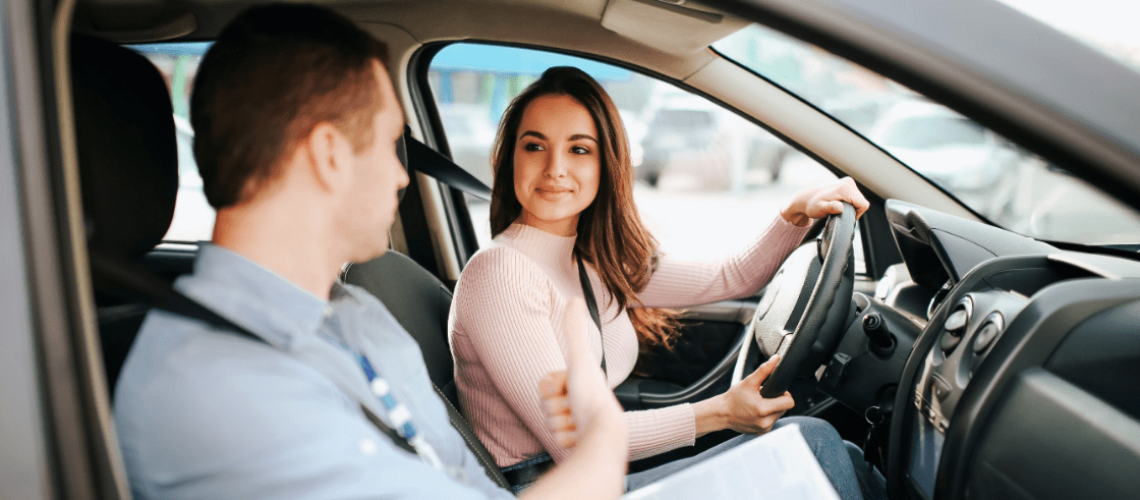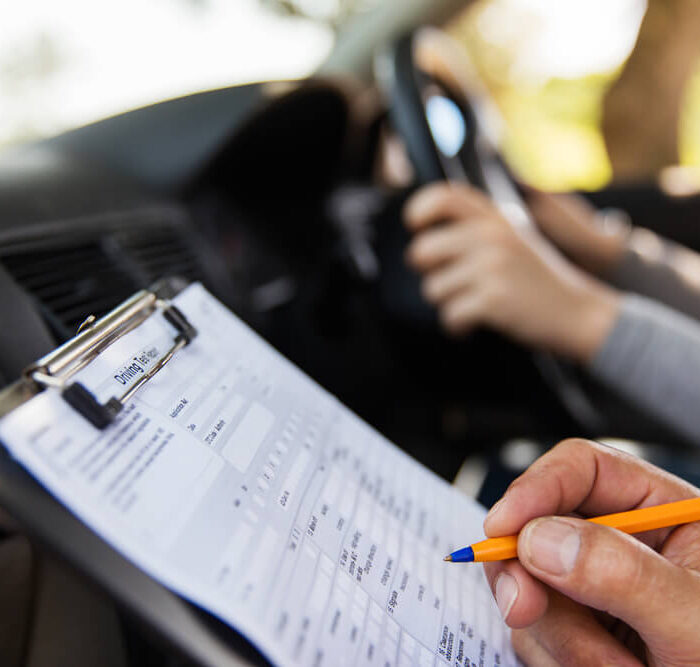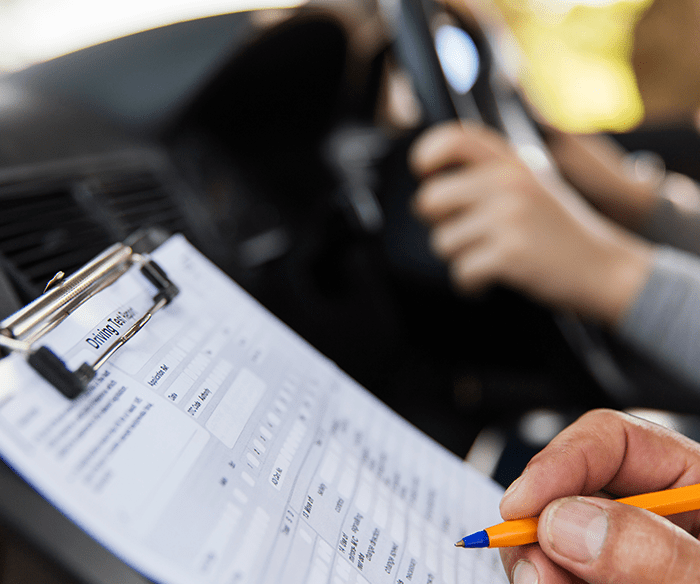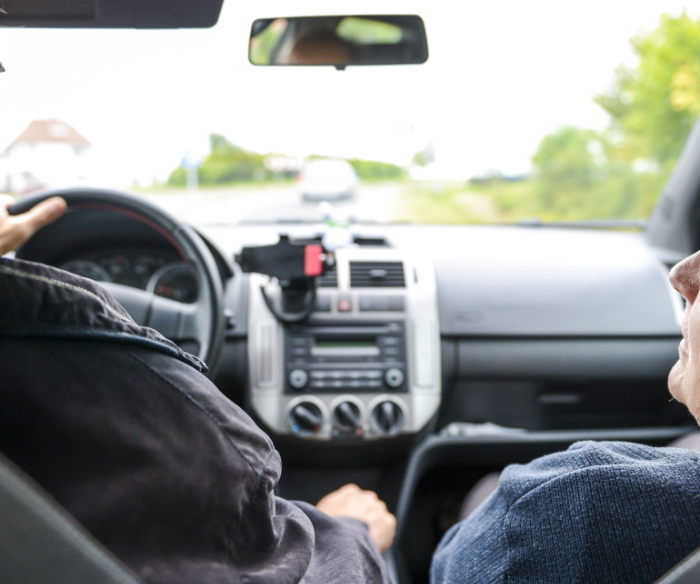The DMV driving test in California includes two parts: a knowledge test and a driving test. It’s crucial to study the driver’s handbook and practice driving to ensure that you are fully prepared. This guide will increase your chances of success on the DMV driving test in California.
Tips for Acing the Knowledge Test or Written Driver’s License Test
The knowledge or written test is given by the California Department of Motor Vehicles. It involves 46 multiple-choice questions about traffic laws, driver actions, and signs. The minimum score you need to pass the test is 38.
The answer to each question on the knowledge test exists in the California Driver Handbook. To ensure that you ace the test, you will want to thoroughly study the handbook which may involve reading it several times. Brace yourself: it’s pretty dry. You can also take an online course that spoonfeeds the information to you in a more engaging way.
Once you feel you know the information well, it’s wise to take a few practice tests. These tests feature sample questions similar to those that are on the written test. By taking a practice test, you will get an idea of what to expect on the written test.
As your test date nears, organize these items to take with you to the California DMV:
- A birth date or legal presence document
- Social Security Number
- A parent or guardian to sign a DL-44 form if you are under the age of 18
- A Certificate of Completion of Driver’s Education or Certificate of Enrollment in Integrated Driver Education and Driver Training Program if you are under the age of 17 and a half.
Once you pass the written test, you are issued a learner’s permit. You now must take 6 hours behind the wheel training with a professional driving instructor and spend 50 hours practicing with a licensed adult, most often a parent.
What Do I Need to Know for My Behind-the-Wheel California DMV Driving Test?
The longer you have to practice, the more comfortable and prepared you will feel while behind the wheel. While many people choose to practice driving with an experienced and licensed friend or family member in the car, you can also use a driver road test service to prepare for the California driving test.
If you are wondering how to prepare for your California DMV driver’s test, here are somebehind the wheel test tips.
- Always practice in the same vehicle in which you intend to take the test. Familiarity with the car’s size and operation decreases your potential errors.
- The night before your test, it is good to perform a pre-test inspection on your car to ensure it is working correctly.
- Make sure there are no cracks in the windshield. California does not allow you to take your test with a cracked windshield. They will reschedule you immediately. Make sure your mirrors are adjusted so you have maximum visibility
- Any requirements that must be met for vehicles in California should be looked over before you test.
- Make sure to take your paperwork completed and ready, your permit, valid insurance information, and vehicle registration details.
- Practice in the area near the DMV so you can become familiar with traffic signs, signals, and patterns. California, you are allowed to practice in the area around the DMV where your test is scheduled.
These preparations will help ease any stress. Remember, too: if you don’t pass the first time, you can always re-take both tests!

Mistakes That Automatically Fail You During the CA DMV Test
Yes, a few errors fail you immediately. Knowing these errors ahead of time will reduce the stress that’s often behind the mistake in the first place. Don’t let friends stir up drama by repeating “automatic fail” horror stories. Listed below are tips for avoiding common driver’s test mistakes so that you are less likely to face an automatic fail.
Quell your nerves before your driver’s test by creating a checklist of everything you need to know and study each one to ensure you are fully prepared.
- Understand your vehicle. The instructor will check to make sure you understand the basics of the car you are driving. Know how to turn your lights on, how to operate your windshield wipers, adjust your mirrors, and even how to fasten your seatbelt.
- Always follow all safety procedures. Failure to observe while engaging is an automatic fail while taking your driver’s test. Paying consistent attention involves checking mirrors regularly.
- Never roll through a stop. The test will involve frequent stops, and if you roll through a stop sign, you will automatically fail. Any time you see red, come to a complete stop. Practicing in the DMV area before the test helps you know the locations of all stop signs and traffic signals.
- Do not ride the double line. When you drive over the double line, you are not following safety protocol. The test administrator will discontinue testing immediately. If you have trouble with this, take some time to practice staying away from the double line while driving before your test.
Do You Have to Parallel Park During the DMV Driving Test in California?
Generally, parallel parking is not required as part of your DMV driving test. Still, it is a skill you will eventually need.
Many people wonder about the requirements for the CA DMV driving test and parallel parking. During the driving test, your instructor will check to see if you can make basic driving maneuvers like right or left turns or stopping at intersections. At the end of the test, you are expected to pull into a spot in the California DMV parking lot.

CA DMV Behind the Wheel Driving Test Details
To make sure you are prepared for your test, you will need to double-check that you have the following items.
- A signed permit
- A parent or guardian (for minors)
- Proof of registration and insurance
- Corrective lenses if needed
- Any additional items specified on your learner’s permit
The DMV Driving Test in California takes around 10 to 20 minutes to complete, and it is broken up into two portions: residential driving, and business district driving. The residential part tests you on your ability to perform basic driving tasks such as driving around a curved road or backing up in a straight line. The business district driving portion may focus on driving in more hectic situations. It includes driving on a congested freeway or making frequent lane changes
To learn more about taking your California DMV driving test, contact the experts at Alliance Defensive Driving School by leaving your message or question on our online form and someone will get back to you within 24 hours. Our professionals will be happy to answer any questions you have.





